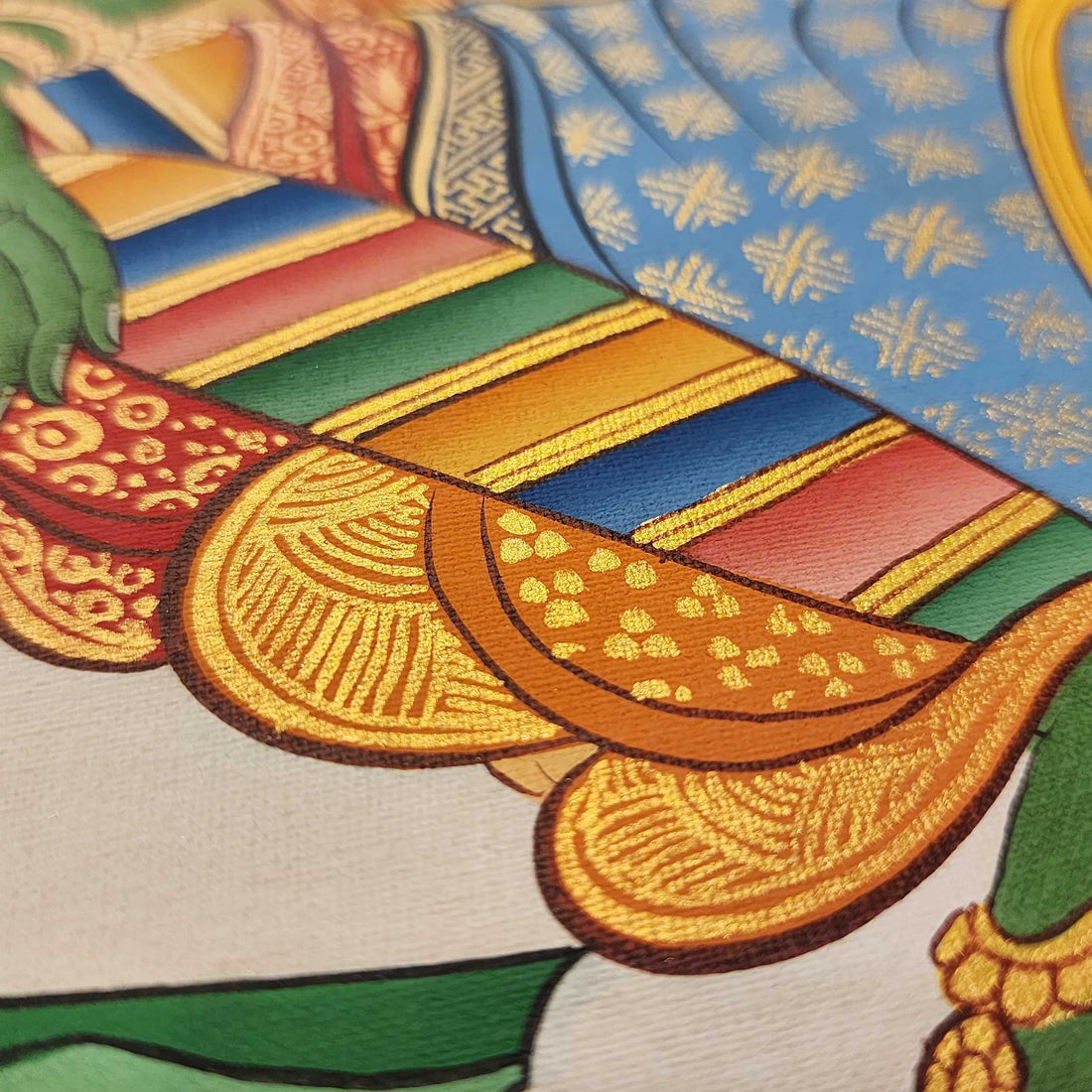
The Sacred Art of Thangka Painting | Meaning, History & Modern Relevance
Compartir
Introduction
Thangka painting is more than just beautiful Tibetan artwork. It is a spiritual map, a meditation tool, and a sacred reminder of the Buddhist path. For centuries, Thangkas have been treasured across the Himalayas for their intricate detail and deep spiritual symbolism. Whether displayed in monasteries or cherished in private homes, these sacred paintings bridge the worlds of art, culture, and faith.
A Brief History of Thangka Painting
Thangka art originated in Tibet over a thousand years ago as a portable teaching tool for monks traveling across remote mountain regions. Traditionally painted on cotton or silk, Thangkas depict deities, mandalas, and scenes from the life of the Buddha. This art form spread across Nepal, Bhutan, and Mongolia, each region adding its own stylistic touch.
Symbolism in Thangka Art
Every figure, color, and gesture in a Thangka carries meaning.
Deities & Bodhisattvas – Represent compassion, wisdom, and protection.
Lotus Flowers – Symbolize purity and enlightenment.
Mandalas – Sacred geometric designs representing the universe.
Through careful composition, the artist creates not just an image, but a visual prayer.
Thangkas in Modern Times
Today, Thangka paintings are admired worldwide for their artistry and cultural heritage. Collectors and practitioners alike value them for:
Meditation practice
Home altars
Cultural preservation
Modern artists continue to keep the tradition alive while also experimenting with new styles and materials.
How to Choose a Thangka
When purchasing a Thangka, consider:
Authenticity – Hand-painted works carry more cultural and spiritual value than prints.
Origin – Tibetan, Nepali, or Bhutanese styles each have unique features.
Symbolism – Choose a piece that resonates with your spiritual journey.
Conclusion
Thangka painting is not just art. It is a living tradition, a spiritual guide, and a piece of Himalayan heritage. By understanding its meaning and history, you can appreciate the beauty and sacredness behind every brushstroke.
